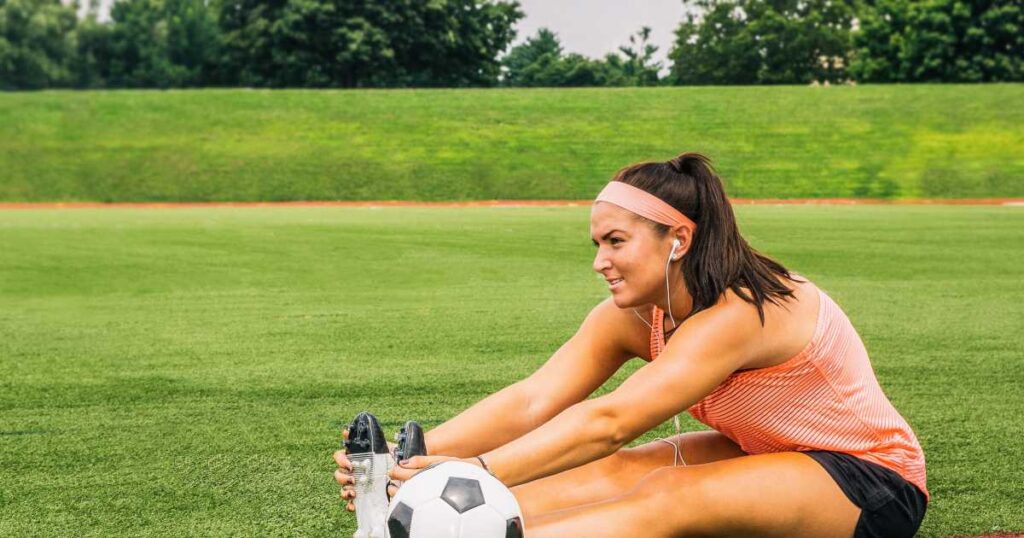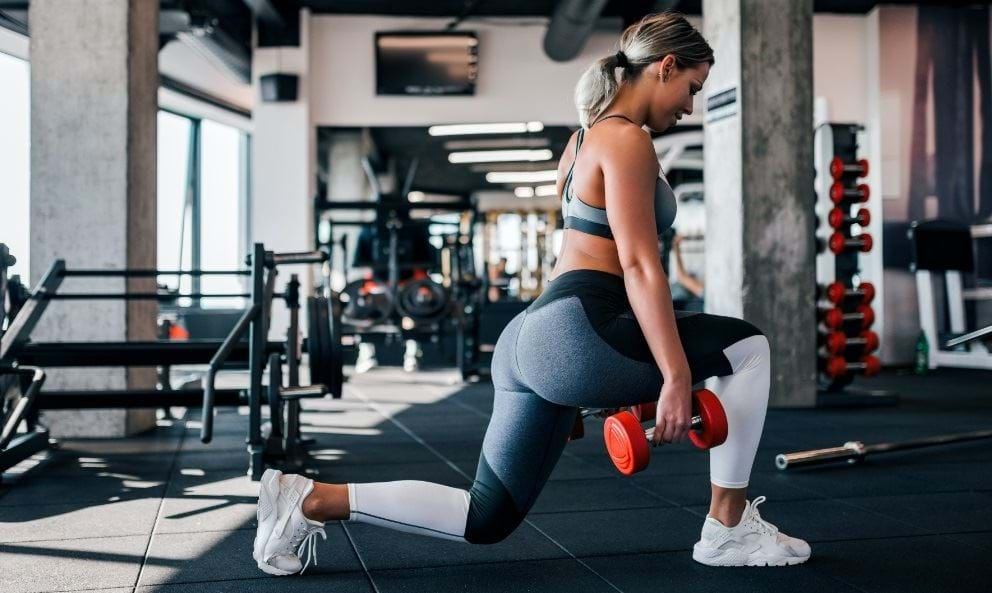Football is a sport that requires a combination of strength, speed, agility, and endurance. Whether you play for fun, for school, or a club, you can benefit from a gym workout that targets the muscles and skills you need on the pitch. Here are some exercises you can do in the gym to improve your football performance and prevent injuries.
Warm Up
Before you start your workout, you should warm up for at least 10 minutes to prepare your body and mind for the exercises. A good warm-up should include the following:
- Jogging, cycling, skipping, or rowing moderately increases your heart rate and blood flow.
- Dynamic stretches to loosen up your joints and muscles. Examples are leg swings, arm circles, shoulder rolls, neck rotations, and trunk twists.
- Activation exercises to fire up your core and stabilizer muscles. Examples are planks, side planks, glute bridges, bird dogs, and clamshells.

Strength Training
Strength training is essential for football players, as it helps them develop power, speed, and resistance to tackles. You should aim to do strength training at least twice a week, focusing on compound movements that work multiple muscle groups at once. Here are some examples of strength exercises you can do in the gym:
- Squats: Squats are one of the best exercises for building lower body strength and explosiveness. They work your quads, hamstrings, glutes, calves, and core. You can do them with a barbell on your back, a dumbbell in each hand, or just your bodyweight. Aim for 3 to 4 sets of 8 to 12 reps with good form.
- Lunges: Lunges are another great exercise for working your lower body muscles and improving your balance and coordination. They also mimic the movement of running and changing direction on the field. You can do them with a barbell on your back, a dumbbell in each hand, or just your bodyweight. You can also vary the direction of your lunges by doing them forward, backward, or sideways. Aim for 3 to 4 sets of 8 to 12 reps per leg with good form.
- Deadlifts: Deadlifts are a powerful exercise that works your entire posterior chain, which includes your hamstrings, glutes, lower back, and upper back. They also improve your grip strength and core stability. You can do them with a barbell or a pair of dumbbells. Aim for 3 to 4 sets of 6 to 10 reps with good form.
- Bench Press: Bench press is a classic exercise that works your chest, shoulders, triceps, and core. It also helps you develop upper body strength and power for pushing opponents and throwing the ball. You can do it with a barbell or a pair of dumbbells. Aim for 3 to 4 sets of 8 to 12 reps with good form.
- Rows: Rows are an important exercise for working your back muscles, which help you maintain good posture and prevent injuries. They also strengthen your biceps and forearms. You can do them with a barbell, a pair of dumbbells, a cable machine, or a rowing machine. Aim for 3 to 4 sets of 8 to 12 reps with good form.
Power Training
Power training is a type of training that involves performing explosive movements that require a lot of force and speed. Power training can help you improve your acceleration, sprinting, jumping, and kicking abilities on the field. You should aim to do power training once or twice a week, preferably after strength training or on a separate day. Here are some examples of power exercises you can do in the gym:
- Box Jumps: Box jumps are a simple but effective exercise that trains your lower body power and explosiveness. They also improve your coordination and landing mechanics. You can do them with a plyometric box or a sturdy bench. Aim for 3 to 4 sets of 6 to 10 reps with good form.
- Medicine Ball Throws: Medicine ball throws are a fun and challenging exercise that trains your upper body power and explosiveness. They also improve your throwing technique and accuracy. You can do them with a medicine ball or a soccer ball. You can throw the ball against a wall or to a partner in different directions and angles. Aim for 3 to 4 sets of 6 to 10 reps with good form.
- Kettlebell Swings: Kettlebell swings are an excellent exercise that trains your posterior chain power and explosiveness. They also improve your hip hinge movement and core stability. You can do them with a kettlebell or a dumbbell. Aim for 3 to 4 sets of 10 to 15 reps with good form.
Cool Down
After you finish your workout, you should cool down for at least 10 minutes to lower your heart rate and relax your muscles. A good cool-down should include:
- Jogging, cycling, skipping, or rowing at a low to moderate pace to flush out the lactic acid and waste products from your muscles.
- Static stretches lengthen and relax your muscles and prevent stiffness and soreness. Examples are hamstring stretch, quad stretch, glute stretch, chest stretch, shoulder stretch, and triceps stretch. Hold each stretch for at least 30 seconds and breathe deeply.
- Foam rolling or massage releases any knots or tight spots in your muscles and improves blood flow and recovery. You can gently massage your muscles with a foam roller, a tennis ball, or your own hands.
Conclusion
This is an example of a girls’ gym workout for football that you can follow or modify according to your goals and needs. Remember always to warm up before and cool down after your workout, and to rest and recover correctly between sessions. Also, don’t forget to eat a balanced diet that supports your training and performance. With consistent effort and dedication, you will see improvements in your football skills and fitness in no time.
Originally posted 2023-08-27 20:11:56.
